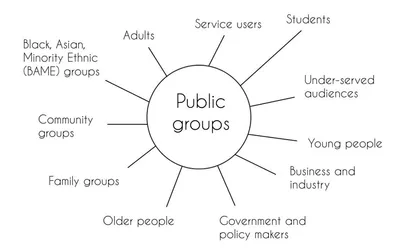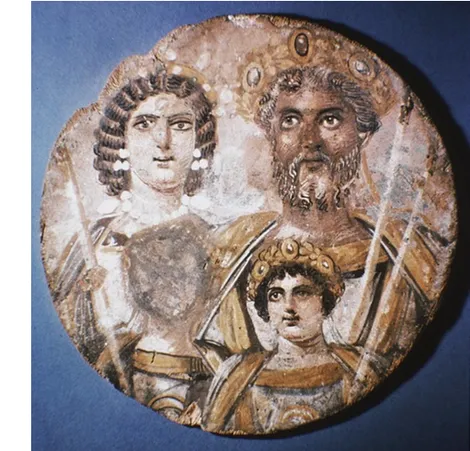Engaging Modern Audiences with the Ancient World, by Leigh Mencarini
Why reaching under-represented and ethnic groups in schools should be key for Classics
My first encounter with Classics was thanks to my mum. She told me about Medusa while twisting pipe-cleaners into her hair for a Hallowe’en party (photo right). I was six years old.
I soon learned all manner of classical subjects are weaved into modern culture and the everyday... films, literature, art and architecture. It’s in the language I use and forms the basis of the democracy in which I live.
Despite this, Classics doesn’t necessarily have a place in everyone's heart.
Keeping Classics relevant
Classics is often seen as an elitist subject for the privileged, or an irrelevant subject about dead, white men.
This hasn’t been helped by a lack of access in education. The teaching of classical subjects in UK state schools has been in sharp decline since the 1970s (a trend that the Classics for All charity is working to tackle).
Improving access for all at school level may help change that image by fostering an interest in Classics from childhood. But what about the wider public?
Who are you talking to... and why?
Rather like an orange, the public is made up of segments of audiences, each with different interests and needs. Choosing which segment to target ensures you can engage with an audience effectively.

Source: NCCPE, ‘Target your audience'
You might argue an engagement strategy for each of these segments, depending on the purpose.
However, to improve access to and the perception of Classics, I’d suggest young people, family groups, under-served audiences and ethnic minority groups are key.
Classics in the classroom
As a child of the Eighties from a low socio-economic background, classical subjects were not offered at any of my schools.
That’s not unusual. For example, in 2010 only 25 percent of UK state schools were offering classical subjects. When compared with 75 percent of independent schools, it’s no surprise that the study of classical subjects has been considered a privilege for the few.
But children’s interests should not be limited by their circumstances. State schools offer an ideal opportunity to introduce Classics and captivate young imaginations from a wide range of backgrounds.
Classics beyond the classroom
Of course, to reach and inspire primary and secondary school-aged audiences, it’s essential to consider parents and teachers as key audiences, too.

Parents educate their children outside classroom hours in a multitude of ways.
Parents play a key role in supporting learning at home (and not just through pandemics). Classical subjects can pop up in extra-curricular activities, days out and holidays, movies... even Hallowe’en costumes!
As well as being central to decision-making at secondary school and before university, parents can play a key role in bringing classical subjects to life.
Teachers should be considered as another key audience.
Primary and secondary educational professionals, particularly non-specialists, benefit from resources that equip them with both the tools and confidence to introduce classical subjects into the classroom.
This is particularly the case when those resources support delivery of the national curriculum for the key stages they teach.
Classics and diversity
A vital key audience, which intersects pupils, teachers and parents, is under-served audiences and ethnic minority groups. It is so important that classical subjects reflect the diverse, modern society in which we live, to ensure the subject feels relevant and accessible to everyone.
This means improving racial representation and the visibility of groups often under-represented in the teaching of Classics, such as women and disabled people. It means focusing not only on the leaders of empires, but the people whose societies they changed.
 It involves being honest about both the successes and failings of Western civilisation. It means looking beyond the limits of time, geography and convention to explore a much broader horizon of ancient human cultures.
It involves being honest about both the successes and failings of Western civilisation. It means looking beyond the limits of time, geography and convention to explore a much broader horizon of ancient human cultures.
Diversity resources are useful in supporting teaching professionals to deliver a non-Eurocentric version of ancient history. So too is making visible the origins and contributions of real individuals from diverse backgrounds.
This might include studying the plays of Publius Terentius Afer (195-159 BCE), the Roman African playwright, or the significance of Julia Domna (right), wife of North African Roman
emperor Septimius Severus (145-211 BCE), made Mater Castrorum (‘mother of the camps’).
In short, it is not only a question of who the key audiences are, or why – but what Classics should engage key audiences with.
The answer, it seems, exists in the multi-faceted, diverse and complex civilisation we live in today.
Further reading
- Find out more about the work of Classics For All – read the Impact Report 2010-2020
- The National Co-ordinating Centre for Public Engagement explains ‘Why does public engagement matter?’
- Charlotte Higgins’s opinion piece on ‘Whatever happened to classics?’ in Varsity (March 5, 2010)
- Research by the University of Reading on the importance of making Classics more diverse (August 2020)

My mother, Lindsey, in 1986, as Medusa
